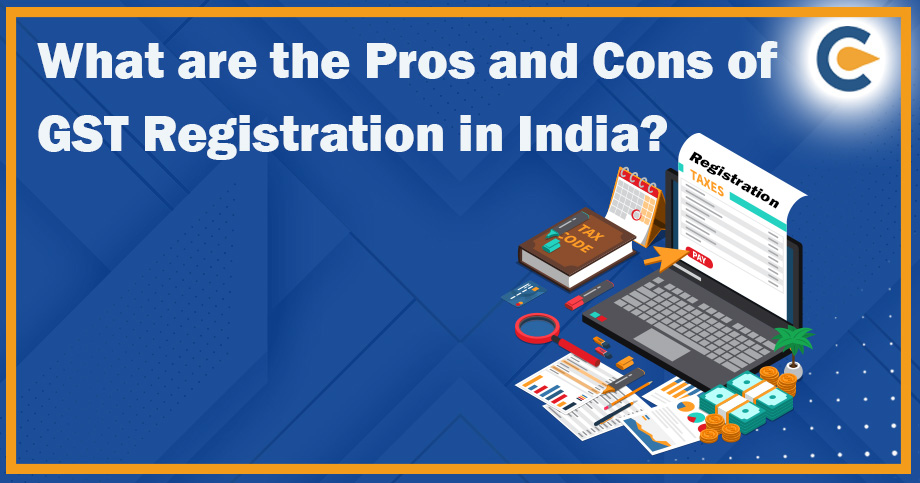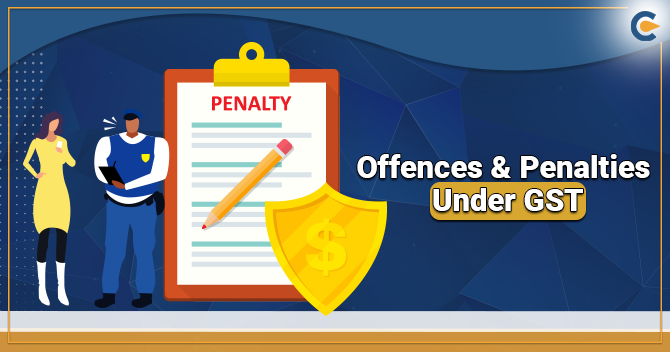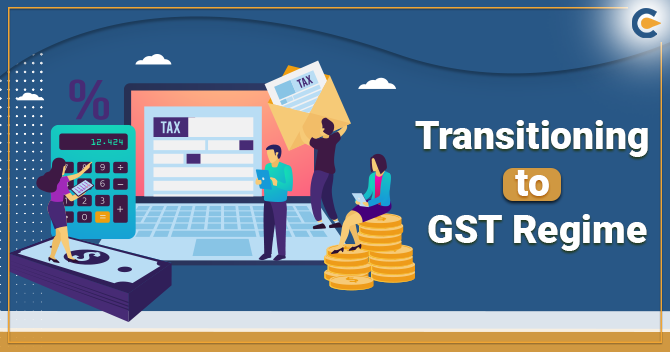Before the Goods and Service Tax (often abbreviated as GST), Indian consumers paid various taxes on goods and services. Since the Constitution permits the federal government and the states to levy taxes, each state imposes taxes on goods entering its territory for sale or consumption. In contrast, the centre imposed manufacturing taxes. This system subjected the same item to multiple taxes. There was no way to recover previously paid taxes. GST Registration was implemented to fill this void. There are numerous Pros and Cons of GST Registration, which are crucial to comprehend before registering for GST.
What is the Goods and Service Tax?
GST refers to India’s Goods and Services Tax,which is imposed on the sale of goods and services. Under GST, several indirect taxes formerly imposed by the federal and state governments have been accumulated and consolidated. These taxes include Value-Added Tax, Service Tax, Local Body Tax, Central Excise duty, Central Sales Tax, Purchase Tax, Luxury Tax, Entry Tax, etc. It benefits all parties involved, including businesses, federal and state governments, and individuals. Nonetheless, there are several Pros and Cons of GST Registration associated with the imposition of GST. In this article, we will examine the features of GST Registration as well as the Pros and Cons of GST Registration in depth.
Pros of Goods and Service Tax
There are numerous Pros and Cons of GST Registration; some of the Pros are listed below.
- Once output taxes are paid, producers and service providers reduce the tax they have already paid on their products by the amount they have paid in output taxes. The total tax burden on manufacturers and service providers will probably decline. As a result, price reductions increase consumption.
- The input credit applies to the recipient, i.e., producers or service providers, only if the supplier provides the details in the form of a return. This tends to prevent tax evasion by providing product and service providers support.
- Due to composition schemes, most small businesses have a reduced tax and compliance burden. Therefore, small businesses with between 20 and 75 lakh rupees in annual revenue can benefit from using composition schemes.
- With the implementation of GST, restrictions on the interstate transfer of goods have been loosened, resulting in a boost to logistical efficiency (one country, one tax scheme). Previously, several warehouses needed to be managed to avoid the new GST and state entry taxes. Consequently, operations expenses will rise. As a result of the Goods and Services Tax, warehouses establish units in strategic locations, unlike every city.
- Historically, the textile and construction industries were largely unorganised and unregulated. There are online payment and compliance provisions under the GST, incorporating these sectors’ responsibilities and regulations.
- The Goods and Services Tax (GST) is systematic and structured to eliminate the cascading effect, which refers to the tax on a tax scheme in which the tax burden is carried through at each point of sale. The product or service’s value has consequently increased. This cascading effect is eliminated because the tax effect is directly reflected in the price of goods and services. The tax cost is transferred closer to the customer, which benefits the sector through enhanced cash flows and working capital management.
- The Goods and Services Tax or (GST) is a transparent tax structure in which licensed retailers have no hidden fees or taxes. The cost of doing business would decrease.
- Previously, companies with a turnover of over 5 lakh rupees were obligated to pay value-added tax. Different states had varying maximum values. Nevertheless, the threshold for the GST system has been raised to 20 lakh rupees. This would exempt small businesses and providers of services.
- Previously, every tax had its returns and enforcement. For instance, monthly returns were filed, service taxes were paid every month, and regional VAT rates varied. As a result of the imposition of GST, however, compliance has decreased. There is only one required tax return.
- Before the Goods and Services Tax (GST) introduction, the e-commerce market did not define the supply of goods. Some states recognised them as facilitators or intermediaries, preventing them from submitting VAT returns. The Goods and Services Tax (GST) has eliminated these unequal treatment provisions.
Cons of Goods and Service Tax?
There are numerous Pros and Cons of GST Registration; some of the Cons are listed below.
- Due to the lock-up of input tax credits, the transition to the Goods and Services Tax (GST) has disrupted the working capital of startups.
- Previously, invoicing was performed with pen and paper under the previous tax system. The entire system was digitalised under the GST system. It was a technically complex transition and difficult for smaller businesses to adopt.
- It is difficult for organisations with branches in more than one Indian state to comply with the GST rules[1] due to the multiple registration requirements. Contrary to common belief, there is no single conformity with the same. They must register with each state and adhere to compliance measures.
- The concept of one country and one tax influences the GST compliance system, which consists of CGST, SGST, and IGST.
- The GST Act has introduced business complexities by granting central and state governments authority over corporations. Consequently, linking the bylaws. This has increased the level of uncertainty many entrepreneurs feel nationwide.
- Small and medium-sized businesses have avoided the tax system to comply with the GST. They were required to learn about this tax scheme’s complexities immediately after the GST imposition. In addition, they had to issue invoices that complied with the GST.
- Companies had to train their employees to comply with the GST, which increased operational expenses. The alternative option was to recruit tax specialists who could implement the changes.
- In contrast to the “Make in India” campaign, the Goods and Services Tax (GST) has a negative impact on the manufacturing sector because the tax exemption for excise duty has been reduced from Rs. 1.5 crores to Rs. 20 lakh.
- The GST impacts rebate and incentive programs because items are priced before discounts are applied. In this regard, earlier products were taxed following the reduction in tax rates.
Types of GST
While evaluating the Pros and Cons of GST Registration, it is important to identify the various types of GST levied for different purposes. There are four distinct types of GST under the GST tax system:
- CGST – Central Goods and Services Tax;
- SGST – State Goods and Services Tax;
- UGST – Union Territory Goods and Services Tax
- IGST- Integrated Goods and Services Tax
Required Documents for GST Registration
There is a list of requirements for GST registration, but one should always consider the Pros and Cons of GST Registration before applying. Following is a list of the documents:
- Incorporation Certificate
- Photograph of the signatory or authorised person
- Photograph of stakeholder (They can be a promoter or a partner)
- Proofs of a company’s address, such as an electric bill or a property tax receipt, or evidence of legal ownership.
- The statement approved by the board of governors and a copy of the document
- Authorisation letters
- Proofs, including bank account information such as a copy of the bank statement, the first page of the passbook, and a voided check, are required.
Conclusion
While the Pros and Cons of GST Registration are the primary focus, there are several other aspects of GST. The Goods and Services Tax (GST) is charged at all stages, beginning with production and ending with consumption. Simply put, only the increase in value will be subject to taxation. The Goods and Services Tax (GST) system permits the final consumer to bear the tax burden imposed by the last dealer in the supply chain. Consequently, everyone else can deduct taxes paid at the previous stage. Such a system is capable of preventing the double taxation of specific goods. Moreover, it ensures that the price of the product and the taxes paid are transparent.
Read Our Article:How To Obtain GST Registration in India?











